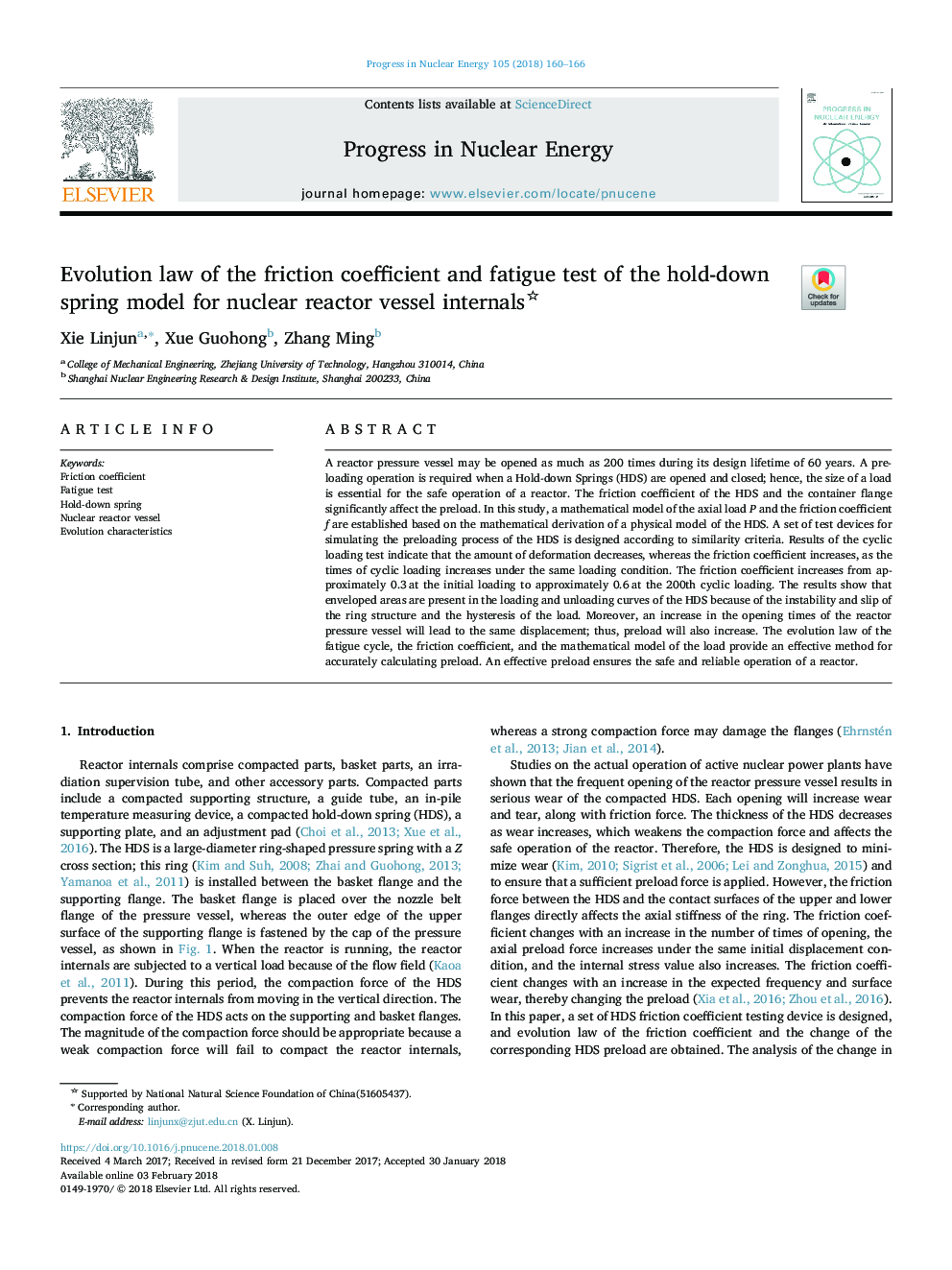| Article ID | Journal | Published Year | Pages | File Type |
|---|---|---|---|---|
| 8084311 | Progress in Nuclear Energy | 2018 | 7 Pages |
Abstract
A reactor pressure vessel may be opened as much as 200 times during its design lifetime of 60 years. A preloading operation is required when a Hold-down Springs (HDS) are opened and closed; hence, the size of a load is essential for the safe operation of a reactor. The friction coefficient of the HDS and the container flange significantly affect the preload. In this study, a mathematical model of the axial load P and the friction coefficient f are established based on the mathematical derivation of a physical model of the HDS. A set of test devices for simulating the preloading process of the HDS is designed according to similarity criteria. Results of the cyclic loading test indicate that the amount of deformation decreases, whereas the friction coefficient increases, as the times of cyclic loading increases under the same loading condition. The friction coefficient increases from approximately 0.3â¯at the initial loading to approximately 0.6â¯at the 200th cyclic loading. The results show that enveloped areas are present in the loading and unloading curves of the HDS because of the instability and slip of the ring structure and the hysteresis of the load. Moreover, an increase in the opening times of the reactor pressure vessel will lead to the same displacement; thus, preload will also increase. The evolution law of the fatigue cycle, the friction coefficient, and the mathematical model of the load provide an effective method for accurately calculating preload. An effective preload ensures the safe and reliable operation of a reactor.
Related Topics
Physical Sciences and Engineering
Energy
Energy Engineering and Power Technology
Authors
Xie Linjun, Xue Guohong, Zhang Ming,
